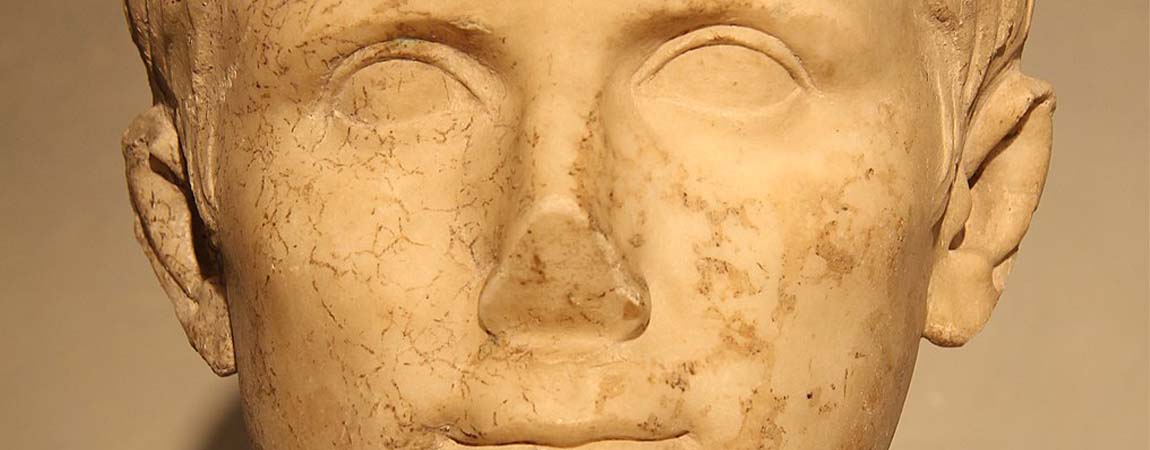
It is known that in Sicily there are traces of imperial Roman history, since there are some towns that have buildings and monuments left which demonstrate how the island had already become a Roman province in 241 BC
To be exact, some towns were part of the empire's expansion projects and had to be naturally well connected to each other, for example this is the case of the connections between the Ionian area of the island - the cities of Catania and Syracuse - and the mountains of the internal area of Sicily, in practice the area of Enna and its province, where there are very important testimonies of the Roman presence - the towns of Piazza Armerina and Centuripe, the latter has in fact very recently celebrated the moment of the return of the Portrait of the emperor Augustus in office, at least temporarily.
The Story of the Portrait of the Emperor Augustus at Centuripe
Already in 70 BC Cicero had defined the city of Centuripe as one of the most flourishing in Sicily, and it was April 30, 1938 when here, during some public excavations for the construction of a road, one of the workers made this surprising discovery, the sculptural portrait of the head of Augustus, the first Roman emperor, and, equally exceptional coincidence, the discovery took place during the period of the 'Augustan bimillennium', i.e. the 2000th anniversary of the Augustus empire. The portrait was made on the same model as the statue of Augustus which is kept in the Vatican Museums, the one which was found in the villa of his wife Livia, in Prima Porta.
Now, the vicissitudes related to the discovery in Centuripe are various, in fact the Portrait of the Emperor Augustus, initially, had been transferred (reluctantly for the Centuripine population that was strongly linked to it) to the Paolo Orsi Museum in Syracuse, given that in any case, Augustus himself, two thousand years earlier, had praised in unison the cities of Centuripe, Syracuse and Catania for the help received during his campaigns.
It was only recently, precisely in the summer of 2021 that, thanks to the kind diplomatic dialogue between the cultural institutions of the Etna and Aretusea cities, it was decided to transfer the imperial portrait in the form of a 'loan', together with other important finds 'centuripini', from the Paolo Orsi Museum in Syracuse, to the Regional Archaeological Museum of Centuripe, for a period of five years.
The event was celebrated as a moment of illustrious historical identity rediscovered for the Centuripine territory, but the archaeological parks of Catania and Syracuse themselves greeted with pleasure in order to promote the birth of a museum spread throughout the Sicilian territory and expand the cultural offer.
July 3, 2021 was the opening day of the Centuripina Antiquaria in the cloister of the former Augustinian convent together with the Segni exhibition.
The Legacy of Imperial Rome for Centuripe
And so, after 83 years of stay in Syracuse, with the return to the town of its discovery, the Portrait of the Emperor Augustus together with two other important portraits, those of Germanicus and Drusus minor, vases and other important works in terracotta, are almost to frame a picture of Roman history in that of Centuripe where there are other famous architectural legacies, such as the Temple of the Augustali, dating back to the I-II AD, which is a rectangular-plan building overlooking a colonnaded street, and then also two monumental tower tombs, one of which is known as the 'Dogana', of which only the upper side can be seen, while the other is the Roman Mausoleum, known as the 'Castello di Corradino'.
And it doesn't end here, because in the Bagni district, through a stone-paved road, you arrive in front of the remains of the Roman Baths, or rather a brick wall with five niches, it was a tub to collect water, always here there are also parts of the aqueduct.
In short, in Centuripe there are many testimonies of the Roman era, the Portrait of the Emperor Augustus is like an icing on the cake of an area already rich enough in testimonies of ancient Rome and therefore the same is ideal for a cultural visit here and maybe even under the pretext of moving to other nearby destinations in Sicily
© Romyquark, CC BY-SA 4.0









